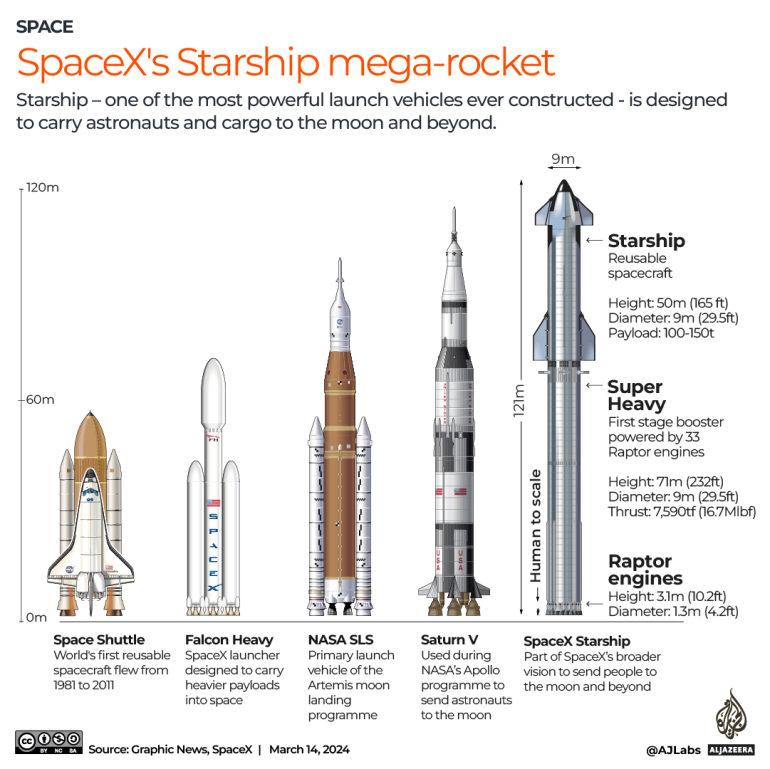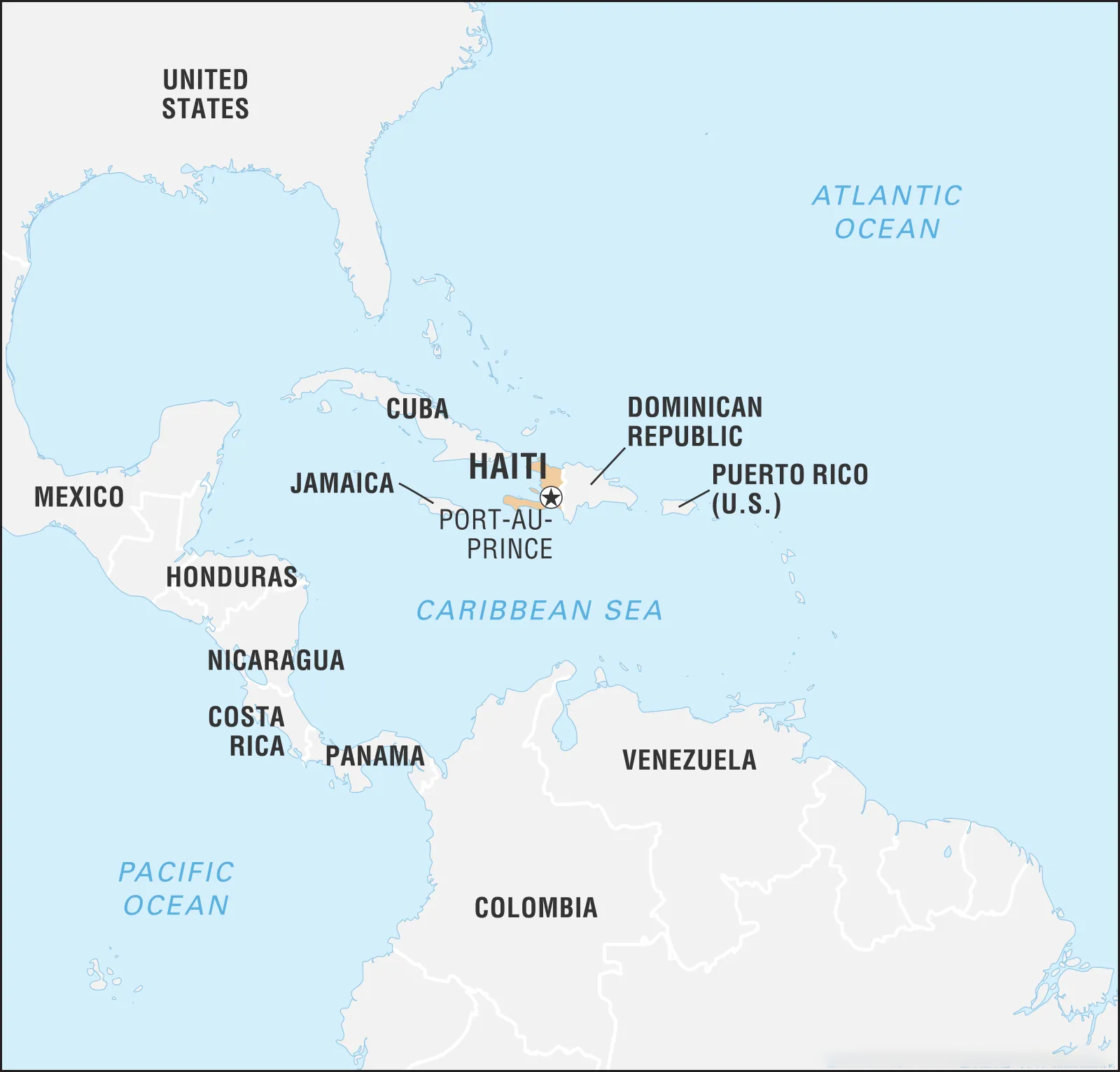Table of Contents
Spacex Starship
Context: SpaceX’s Starship rocket achieved its first fully successful test flight.
About Starship Rocket

- Overview: Starship is a two-stage heavy lift-off vehicle designed to transport crew and cargo to Earth orbit, the Moon, Mars, and beyond.
- It is the largest rocket ever flown (120 metres tall), surpassing the Saturn V (111-metre), which took Neil Armstrong to the Moon.
- For perspective, the Qutab Minar stands at 72.5 metres tall.
- Super Heavy Booster: The booster consists of 33 Raptor engines, generating 74 meganewtons of thrust.
- In comparison, NASA’s Space Launch System (SLS) produced 39 meganewtons of thrust, and Saturn V delivered about 35 meganewtons.
- Engine Specifications: The Raptor engines use a 3.6:1 ratio of liquid oxygen (oxidizer) to liquid methane (fuel).
- Reusability: SpaceX aims for the Super Heavy booster to be fully reusable, capable of re-entering Earth’s atmosphere and landing back at the launch site.
- The Starship spacecraft, equipped with six Raptor engines and four landing fins, is also designed to be fully reusable.
How Can Starship Reduce the Cost of Space Travel?
- High Payload Capacity: Starship is expected to carry up to 150 tonnes to low-Earth orbit and at least 100 tonnes to the Moon and Mars, more than the total mass soft-landed on the Moon so far.
- In-Orbit Refuelling: SpaceX is developing the capability for Starship to be refuelled in Earth orbit by other Starships, allowing it to operate like an aeroplane with quick turnaround times.
- Rapid Reusability: Starship’s design ensures that its principal hardware elements are not discarded but brought back to the ground for reuse.
- This is in contrast to other systems like NASA’s reusable Space Shuttle, which required extensive refurbishment.
- Cost Efficiency: Estimates suggest that Starship can deliver up to 100 tonnes to Mars for just $50 million.
- In comparison, the Space Shuttle, which was retired in 2011, cost $1.5 billion per launch to carry a quarter of Starship’s payload to low-Earth orbit.
Benefits to Science
- Heavy Payload Capacity: Starship’s ability to carry large payloads will enable the launch of bigger and more advanced space telescopes, and larger equipment for Moon and Mars missions.
- Enhanced Scientific Capabilities: Scientists can send full-sized drilling rigs and other large equipment, providing unprecedented access to the interior of the Moon and Mars.
- Sample Return Missions: Starship’s reusability allows for the return of significant amounts of samples from the Moon and other planets, aiding scientific research on our solar system and the origin of life.
- Support for NASA’s Artemis Program: Starship is central to NASA’s Artemis program, which aims to return astronauts to the Moon by 2030 and to Mars before the end of the next decade.
Challenges
- Safety and Reliability: SpaceX needs to demonstrate that Starship is safe and reliable while keeping costs low.
- Historical Context: The Space Shuttle program faced criticism for higher incremental costs of reusable shuttles compared to expendable rockets.
- Development Hurdles: Despite rapid development, progress has been slower than anticipated, and it has come with significant costs.
Elephants Use Names To Communicate
Context: Researchers studying elephants have noticed that sometimes when an elephant makes a vocalisation to a group, all members respond, while other times only a single individual does. This led to the hypothesis that elephants might address each other by the equivalent of names.
Study Overview
- A study involving wild African savannah elephants in Kenya supports this idea. Researchers analysed vocalisations of more than 100 elephants in Amboseli National Park and Samburu National Reserve.
- These vocalisations were mostly rumbles produced using the elephants’ vocal cords, similar to human speech.
- Methodology
- Machine-Learning Analysis: The researchers used a machine-learning model to identify a name-like component in the calls, suggesting that a specific elephant was the intended addressee.
- Audio Playback Experiment: Audio recordings were played to 17 elephants to observe their responses to calls apparently addressed to them versus calls meant for others.
- Findings
- Response to Calls: Elephants responded more strongly to calls addressed to them, displaying more enthusiasm, moving toward the audio source, and making more vocalisations.
- Indication of Naming: The findings suggest that elephants address each other with something akin to names, as proposed by behavioural ecologist Mickey Pardo, the lead author of the study published in Nature Ecology & Evolution.
- Implications
- Social Bonds: Addressing one another individually highlights the importance of social bonds for elephants, emphasising the need for sophisticated learning and understanding of social relationships.
- Communication Complexity: Elephants are known for their intelligence, keen memory, problem-solving skills, and sophisticated communication, which includes visual, acoustic, and tactile gestures during interactions.
- Purpose of “Naming”
- Contact Calls: Elephants often use names during contact calls to other individuals.
- Maternal Communication: Mothers frequently use names when communicating with their calves to calm them or check in.
- Greeting Ceremonies: Names were less common in greeting vocalisations than expected.
- Comparison with Other Animals
- Dolphins and Parrots: Like elephants, dolphins and parrots use individual-specific vocal labels, but they typically imitate the sounds made by others.
- In contrast, elephants’ names appear to be arbitrary, similar to human names, indicating a capacity for abstract thought.
- Dolphins and Parrots: Like elephants, dolphins and parrots use individual-specific vocal labels, but they typically imitate the sounds made by others.
Future Prospects
- Understanding Elephant Communication:There is a need for further research to understand the syntax and basic elements of elephant vocalisations.
- Potential for Human-Elephant Communication: While the idea of “talking” with elephants is appealing, significant progress in understanding their communication system is necessary.
- Intelligence and Conservation: The study underscores the intelligence and intriguing nature of elephants, aiming to foster greater interest in their conservation and protection.
Haiti
Context: Haiti’s transitional council appointed a new Cabinet, marking the final step in restructuring the government that will lead a country besieged by gangs.
About Haiti
- Location: Situated between the Caribbean Sea and the North Atlantic Ocean.

- Island of Hispaniola:
- Occupies the western one-third of the island of Hispaniola.
- Shares a border with the Dominican Republic on the eastern side, Jamaica to the west and Cuba to the northwest..
- Capital and Major Cities:
- The capital city is Port-au-Prince.
- Other major cities include Cap-Haïtien, Les Cayes, and Gonaïves.
- Population: Haiti has an estimated population of around 11 million people.
- Language: The official languages are Haitian Creole and French.
- Government:
- It is the second oldest republic in the Western Hemisphere, after the United States.
- A president as head of state and a prime minister as head of government.
- The political situation has been unstable, with frequent changes in leadership and ongoing challenges related to governance.
Examples, Case Studies and Data
Air Pollution, Environment (GS 3): Fine particulate matter (PM 2.5) has caused an alarming 135 million premature deaths globally between 1980 and 2020, according to a new study.
- The research also underscores the impact of climate variability phenomena such as El Nino-Southern Oscillation, Indian Ocean Dipole, and North Atlantic Oscillation in worsening PM2.5 pollution levels.


 List of Chief Ministers of Jammu and Kas...
List of Chief Ministers of Jammu and Kas...
 Cabinet Committee on Security Suspends I...
Cabinet Committee on Security Suspends I...
 Pahalgam Terror Attack: All Eyes on Paha...
Pahalgam Terror Attack: All Eyes on Paha...






















